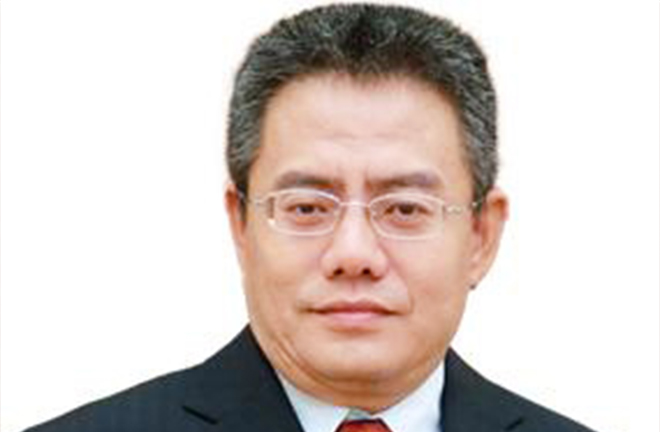The logic of Chinese modernization

General Secretary of the CPC Central Committee Xi Jinping’s remarks at the opening ceremony of a study session to learn and implement the spirit of the 20th CPC National Congress profoundly expounded on a series of major theoretical and practical issues of Chinese modernization, thoroughly revealing its internal logic. It is the ideological guidance for correctly understanding Chinese modernization, and is the compass for advancing Chinese modernization in practice.
Historical logic
The historical process of Chinese modernization has progressed in one continuous line. Through the New Democratic Revolution, the People’s Republic of China was founded, creating fundamental social conditions for the realization of modernization. Through the socialist revolution and construction, an independent and relatively complete industrial system and national economic system were established, laying a fundamental political prerequisite, valuable experience, theoretical preparation and a material foundation for the modernization drive. Through reform, opening up and socialist modernization, the historic breakthrough of becoming the second largest economy in the world was achieved, providing Chinese modernization with a new dynamic system guarantee and material conditions for rapid development. Particularly since the 18th CPC National Congress in 2012, by promoting a series of major theoretical, practical and strategic innovations, absolute poverty has been eliminated, and a moderately prosperous society in all respects has been built. This has provided a more comprehensive institutional guarantee, a more solid material foundation, and a more proactive spiritual force for Chinese modernization. The Chinese modernization path has thus become broader and brighter.
Theoretical logic
“Chinese characteristics” originate from the fact that China possesses unique national conditions determined and shaped by its economy, society, history, and culture. “Chinese characteristics” are established on the exploration of paths and methods suitable on the ground in China.
As the modernization of a huge population, of common prosperity for all, of material and cultural-ethical advancement, of harmony between humanity and nature, and of peaceful development, Chinese modernization dispels the myth that “modernization is equal to Westernization.” Chinese modernization has presented an alternative modernization scenario, providing Chinese insights to aid the exploration of a better social system for humanity.
Chinese modernization is socialist modernization pursued under the leadership of the CPC. Socialism is the fundamental nature of Chinese modernization, and the fundamental characteristic of socialism with Chinese characteristics is the leadership of the Party.
Civilizational logic
Chinese modernization has not only forged a new path, but also created a new form of human advancement. This new form of human advancement builds upon the creative transformation and innovative development of Chinese civilization, incorporating and embodying new epochal characteristics. The unique worldview, values, historical and civilizational view, view of democracy, and ecological view contained in Chinese modernization and its practices are major innovations in the theory and practice of world modernization.
Civilization transforms all creatures, endowing society with meaning and hope. This “transformation” is the essence of Chinese modernization. The Chinese path to modernization has nourished modern economic and social development with more than 5000 years of Chinese civilization. It has not only expanded the path of developing countries to achieve modernization with China’s successful practices, but also provided new choices for countries that hope to accelerate development and maintain their independence. It has also created a new form of human advancement by correctly handling the relationship between human and nature, between human and society, and between humans, and between humans and themselves.
Practical logic
Chinese modernization is to build a modern socialist country in all respects in the primary stage of socialism, and to comprehensively promote the rejuvenation of the Chinese nation against the backdrop of accelerated global changes unseen in a century. New strategic opportunities, new strategic tasks, stages, requirements, and environments require new strategic operations, responses, and implementation.
The systems thinking should be firmly adhered to. We should constantly improve our strategic, historical, dialectical, systematic, and innovative thinking. We should maintain our “rule of law” mindset, our steadfast commitment to the “bottom line,” and uphold the systematic principle throughout the process of Chinese modernization. Advancing Chinese modernization requires coordination, systematic planning and a holistic approach. To achieve this, a series of major relationships should be effectively managed: top-level design and practical exploration, strategy and tactics, upholding fundamental principles and breaking new ground, efficiency and fairness, vitality and order, and self-reliance and opening up.
A great struggle should be fought for. Promoting Chinese modernization is an unprecedented undertaking. It is one that will inevitably encounter all kinds of predictable and unpredictable risks, challenges and difficulties. We should dare to fight, fight well, and open up a new world for our cause through tenacious struggles. In the face of all kinds of risks and challenges, we should keep our strategy clear, keep a clear mind and remain the strategic focus. To maintain strategic confidence in the face of the changing external environment, we should maintain our strategic initiative, make a new start as situations change, and firmly hold the destiny of China’s development and progress in our hands.
Xin Ming is a professor from the School of Marxism at the Party School of the Central Committee of C.P.C (National Academy of Governance).
Edited by ZHAO YUAN
